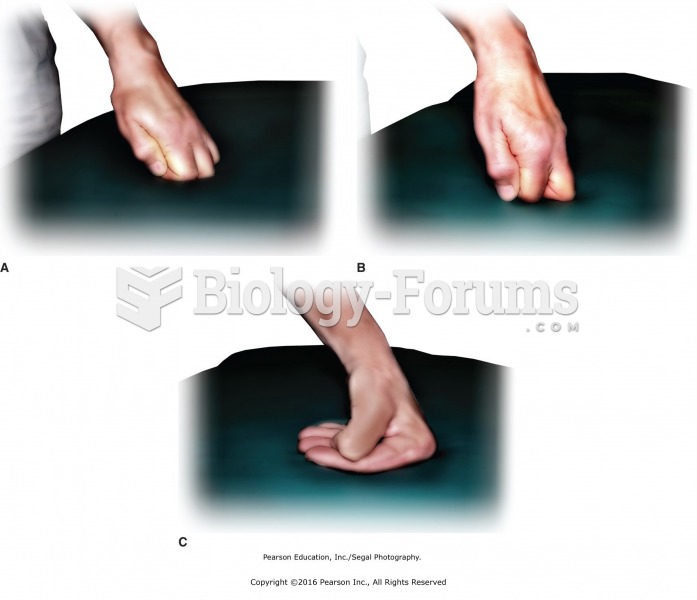|
|
|
There can actually be a 25-hour time difference between certain locations in the world. The International Date Line passes between the islands of Samoa and American Samoa. It is not a straight line, but "zig-zags" around various island chains. Therefore, Samoa and nearby islands have one date, while American Samoa and nearby islands are one day behind. Daylight saving time is used in some islands, but not in others—further shifting the hours out of sync with natural time.
A seasonal flu vaccine is the best way to reduce the chances you will get seasonal influenza and spread it to others.
The U.S. Pharmacopeia Medication Errors Reporting Program states that approximately 50% of all medication errors involve insulin.
Bacteria have flourished on the earth for over three billion years. They were the first life forms on the planet.
Egg cells are about the size of a grain of sand. They are formed inside of a female's ovaries before she is even born.
 Death cap (Amanita phalloides) is New Zealand’s most poisonous toadstool – and one of the most poiso
Death cap (Amanita phalloides) is New Zealand’s most poisonous toadstool – and one of the most poiso
 French and U.S. presidential elections in 2012 illustrate the durability of political culture and ho
French and U.S. presidential elections in 2012 illustrate the durability of political culture and ho
 Different hand positions and working surfaces for massage applications on large muscles. A. Flat ...
Different hand positions and working surfaces for massage applications on large muscles. A. Flat ...




